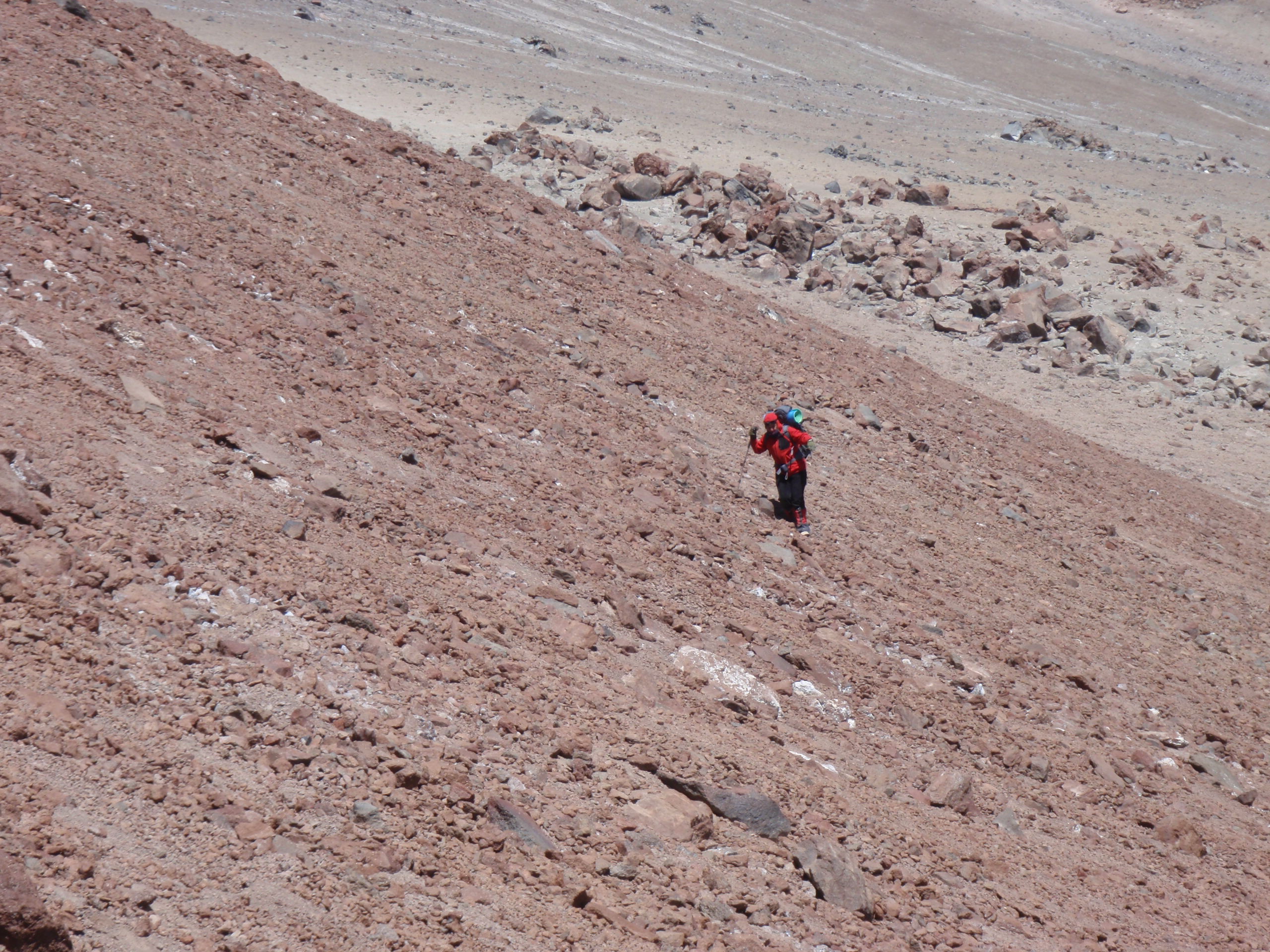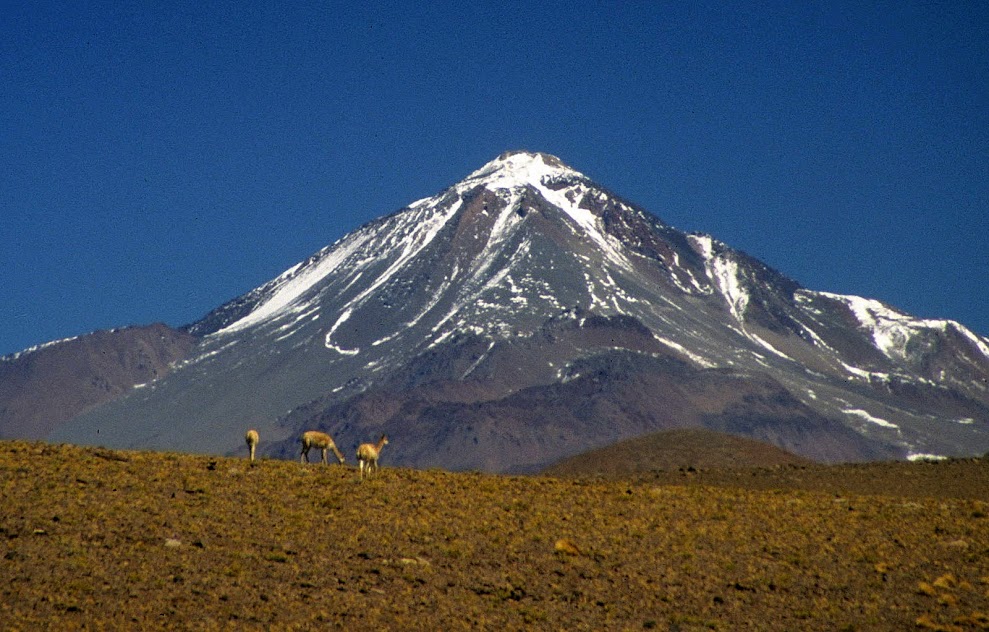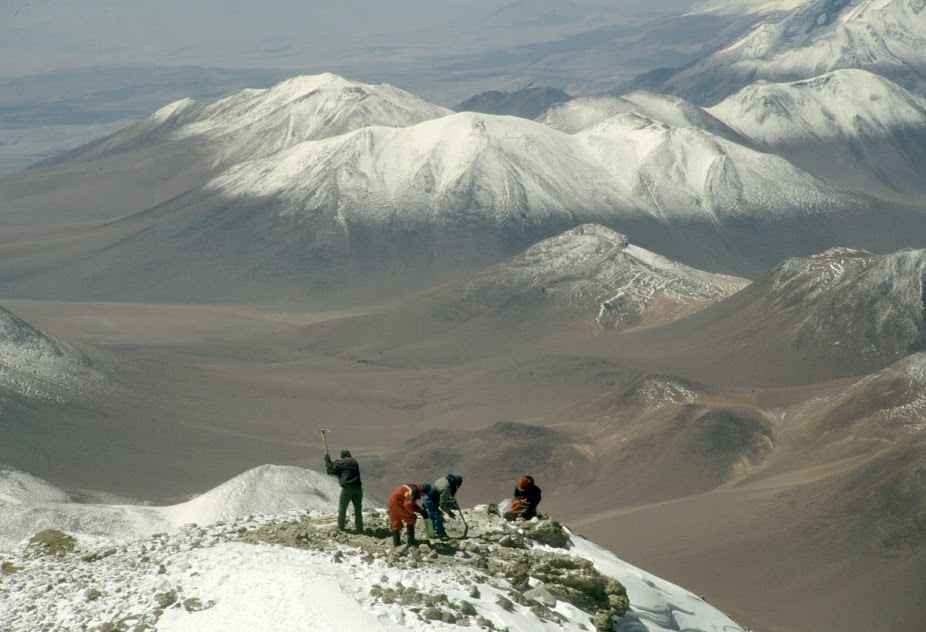
Extreme Microbes Found Near Mummy Burial Site

About 500 years ago a group of Incas marched hundreds of miles through the treacherous Andes Mountains to the top of a distant volcano, where they buried three children alive as part of a religious ceremony. In 1999, an expedition led by explorer Johan Reinhard unearthed the mummies atop Argentina's Mount Llullaillaco (yoo-yay-YAH-co), finding that they were among the best preserved mummies ever discovered, with largely unscathed skin and facial features.
When University of Colorado researcher Steve Schmidt read about the mummies, he knew he had to visit the region — not to see the mummies, but to study microbes. Normally, bodies that old would have long ago decayed, in part by the action of microbes, so Schmidt reasoned that the microbes on the mountain, if there were any, must be pretty intriguing.
"Finding a body so well-preserved 500 years after burial, without preservatives — that's remarkable," Schmidt told OurAmazingPlanet. "That's the reason I first got interested in the mountain."
Mountain microbes
So his team traveled to the area, climbed the volcano and took samples of soil near the summit. After performing genetic tests on the microbes, his group found several unique varieties that have not been described before. The most abundant were from a subset of Actinobacteria, the group that has given rise to most human antibiotics. They also came from 12 different broad groups called phyla, and all three domains of life.

And yet, the lack of diversity was what most surprised Schmidt. "We've studied many other soils around the world, and this is by far the simplest system we've seen," Schmidt said. Per gram, soil in your garden likely has hundreds or thousands more varieties of microbes than the stuff atop Llullaillaco, he said. "That speaks to the fact that it's such a harsh environment." [Harshest Environments on Earth]
This ecosystem of fungi and bacteria is the highest ever studied on land, Schmidt said. That's fitting, perhaps, as it's found next to the highest archaeological site on the globe.
Sign up for the Live Science daily newsletter now
Get the world’s most fascinating discoveries delivered straight to your inbox.
Schmidt has studied bacteria in high elevations around the world, but none in locations quite so extreme. Here, bugs must survive soil temperatures that can swing 125 degrees Fahrenheit (70 degrees Celsius) over the course of a single day, dipping as low as 5 F (minus 15 C) on a balmy summer's eve. "This is really quite unusual," said Craig Cary, a researcher at the University of Waikato in New Zealand, who wasn't involved in the research. "It makes it a special place to study."
The sheer quantity of ultraviolet radiation is also sky-high due to the elevation of Llullaillaco's summit at 22,110 feet (6,739 meters) above sea level — light has to go through less of the Earth's atmosphere, so more UV rays get through. There is also very little water. What's there comes from melted snow—the little that doesn't sublimate, or vaporize, in the brutal Atacama Desert sun.
In other words, it's an ideal location to study microbes, because the harsh conditions select for unique organisms and have made it difficult for humans to reach, let alone study.
Life at the extremes
In 2009, Schmidt, his doctoral student Ryan Lynch and the rest of his team arrived on Llullaillaco, which borders Chile and is 200 miles (320 kilometers) from anything you could consider a town. They had to plot their course up the Argentine side since land mines still riddle the Chilean approach to the mountain, placed there during the two country's near-war in 1978. After several days of acclimatization, the researchers made it most of the way up the volcano to take soil samples from just beneath the surface, Lynch said.

The team can't say for certain that they've found species that are new to science because they haven't cultured and isolated them in the lab yet, although Lynch is currently working to do just that. To identify the microbes, researchers ran the DNA sequences found in the soil through a database containing the full genomes of most known soil organisms. There weren't any exact matches, which would indicate one of the Llullaillaco species had already been sequenced. Cary said several of the microbes were similar to those he's found atop Mount Erebus, the Antarctic volcano.
How the microbes survive such grueling conditions remains a mystery, for now. Schmidt said some of the bugs survive by breaking down trace atmospheric gases, like carbon monoxide. Louisiana State University researcher Gary King has found microbes that survive off this gas elsewhere, like at the Kilauea volcano in Hawaii. [Extreme Life on Earth: 8 Bizarre Creatures]
One thing the scientists didn't find was chlorophyll, or any other evidence of photosynthesis. That's perhaps not surprising in soil where nitrogen, necessary for plants to live, is undetectable.
Being so dry and cold, Llullaillaco has parallels to conditions on Mars, said NASA astrobiologist Chris McKay, with whom Schmidt has collaborated. The work could shed light on what it takes to survive in such environments, or what to look for. "Any time we're working in dry, cold environments, we're going to learn more about conditions that could occur on other planets," Cary said in an interview.
Even more important to Schmidt, though, is fully cataloguing life on this planet. "It's kind of amazing to me that in this day and age we still haven't explored all the extreme places here to see what the limits to life on Earth are," he said.
Johan Reinhard, the explorer who found the mummies, was happy to see his work motivated research in a different field, he said. "I've always been curious to see what might live up there."
Reach Douglas Main at dmain@techmedianetwork.com. Follow him on Twitter @Douglas_Main. Follow OurAmazingPlanet for the latest in Earth science and exploration news on Twitter @OAPlanet. We're also on Facebook and Google+.











